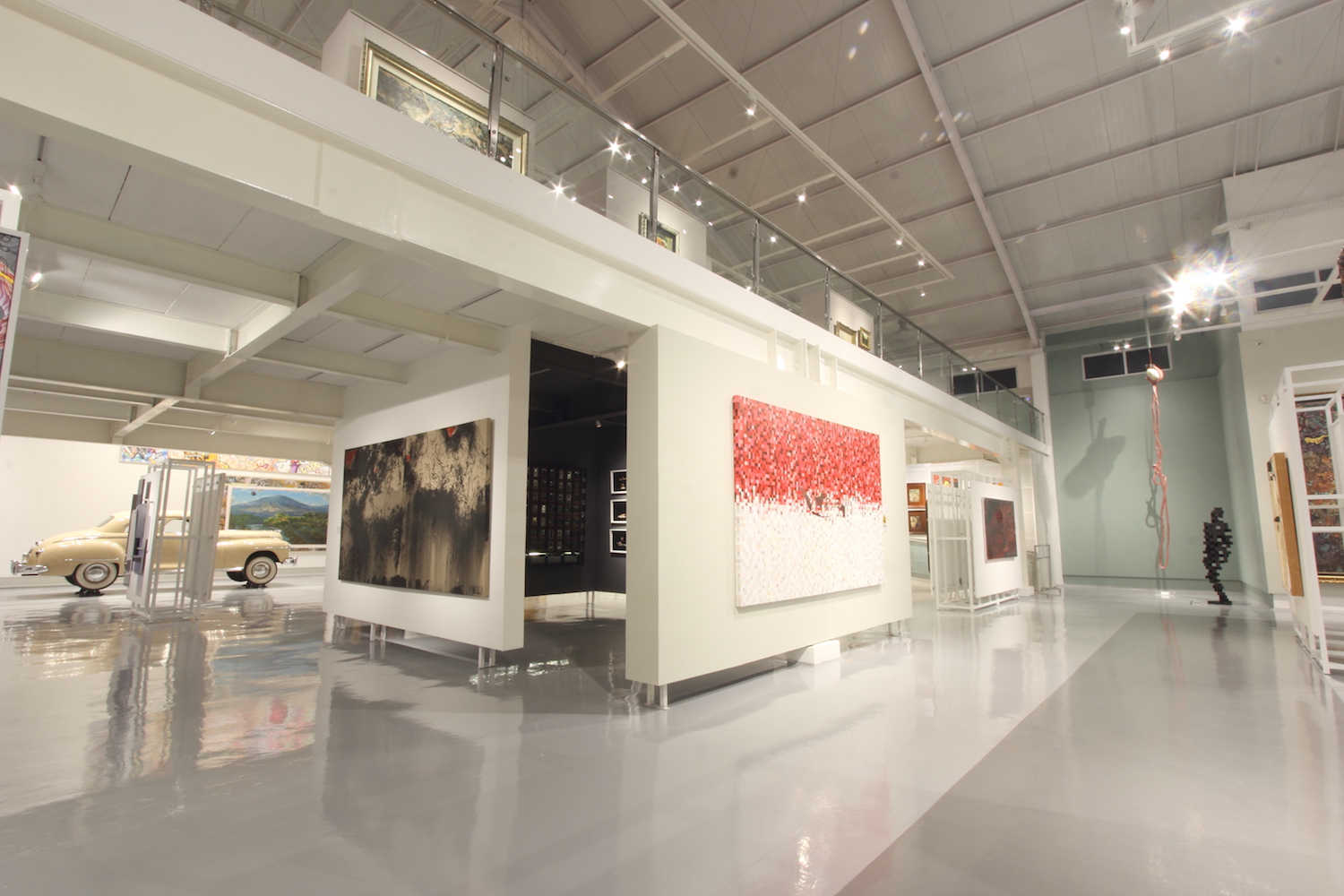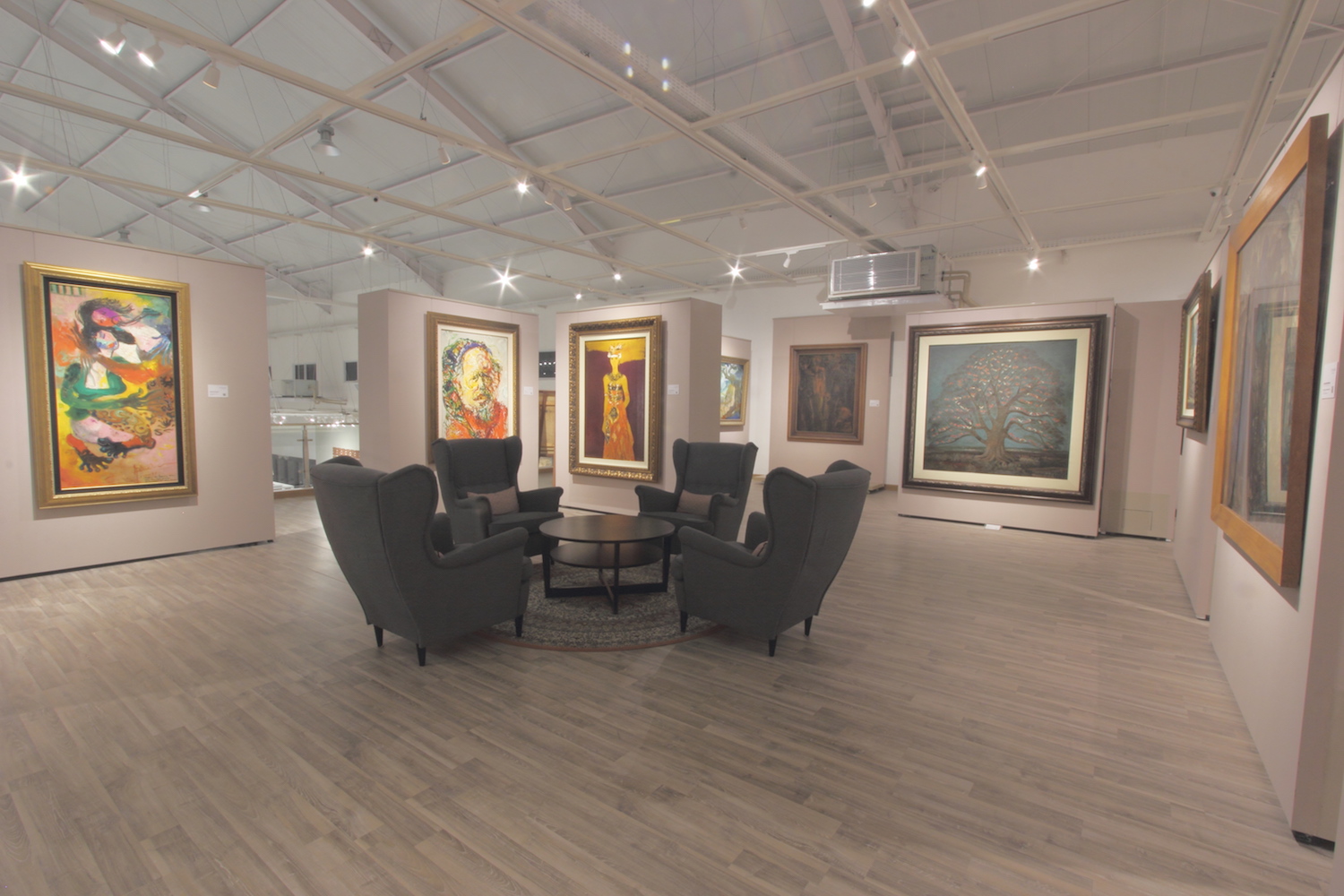Situated in the city of Surakarta in Central Java, Tumurun Private Museum opened last year. The museum houses about a hundred works of modern and contemporary art, as well as antique cars, which come from the collection owned by the Lukminto family, who is also the proprietor of textile and garment manufacturing company Sritex.
LARRY’S LIST spoke with Iwan Kurniawan Lukminto, who talked about the motivation behind opening a museum dedicated to Indonesian art, why it is important for him to share his collection with the public, the most Instagrammable ‘Floating Eyes’ sculpture, as well as his visions for the museum in the next five and ten years respectively.

Background
What is your motivation behind opening a museum / public accessible space?
First, is to give a wider knowledge and education to the public about art. We also aim at letting the audience learn all different types of art: from painting, sculpture, photography to performance art. We also prioritize visitors who are art students or young artists, allowing them to explore and widen their knowledge on art in different media.
Why is it important for you to share your collection with a wider public?
To make the art alive, and hopefully, also to inspire younger generation to love art. I believe that every art is born out of love. Same as the nature of love, the more it gives, the more it has. So by sharing it with wider audience, I let the art gives something to the people: feelings, comforts… inspirations – which ultimately make this art alive in the viewer’s heart and mind.

Why did you choose this city for opening the museum there?
Solo is my hometown, it is a very cultural city famous for its batik, wayang orang (performance art) and culinary. However, it has not had a museum dedicated to Indonesian art. Thus, I think Tumurun will meet this need and compliment the city tourism very well.
What is the mission of the museum/foundation? How to achieve this mission?
As the name of the museum itself, TUMURUN means passing down from one generation to the next, I hope the collection of this museum will continue to sustain, preserve and inspire many generations to come. I believe I can achieve this by continuously improving the quality of the collections, and of course, by sharing this to a wider audience.

Collection
How many artworks do you own and how many of them are displayed in the museum?
We have approximately 300 pcs, and around 80% are displayed in the museum.
How do you decide what from your collection to show in the museum?
First, we judge by the importance of the artist towards the art history or movement. And second is how important is the work in the artist’s career.

Do your private collection and the collection in the museum have different focuses, regarding the artists or genre of art?
In our private home, we focus more on international art (post-war and contemporary art), whereas in the museum we focus more on Indonesian art, both modern and contemporary.
You once said, ‘Our artists are as good as international artists.’ What is the proportion of Indonesian artists to international artists in your collection?
We are still considered as “young” in terms of collecting, we are only 3 years in taking serious in collecting. Even until now, we are still in the active process of acquiring. Up to now, still around 90% is Indonesian artists, and the remaining 10% is international artists.


Access and display
The museum is open to public by appointment only. Why is it so?
Our museum is not architecturally designed for public access, therefore, we limit the number of people on each session for the comfort for the visitors and the safety for the artwork.
How often do you change the display in the museum?
It is a permanent collection of the museum, so we rarely change the display.


From the most Instagrammable to the next ten years
What is the most Instagrammable piece in your museum?
The big sculpture by Wedhar Riyadi, titled “Floating Eyes” – I guess this becomes the icon of this museum.
What are on your wish list of 2019 regarding your collection and your museum?
To complete the story from modern to contemporary art of Indonesia, we still have many artists missing, but collecting is about a journey, too – we cannot force to complete it in such a short time.
What do you think are the key elements that determine the success of a private museum?
First is the collection itself: it must be legit in the credibility and quality. Second, it must give something to the audience: some kind of experience, whether it is pure entertainment, inspiration, education, etc so that people feel they gain benefit from visiting the museum. Thus, making them visit more and ask their friends to come along. Last but not least is the passion of the owner in putting efforts and love to continuously fuel development of the museum.
What are your visions for the museum in the next five and ten years respectively?
In the next five years, we aim at having another space, which will focus more on curating shows that will promote Indonesian young artists.
In the next ten years, we hope to have a bigger space which will allow our permanent collection to be displayed, and a wider audience to enjoy art.
Besides this museum how else do you promote Indonesian artists?
We continuously and actively expand our networks with international institutions and non-profit organizations to promote Indonesian artists.

Related: Tumurun Private Museum
This ‘Private Museum Insights’ editorial series is born with the support of Phillips, a partner of THE PRIVATE ART PASS 2019.








